Geology Reference
In-Depth Information
both The Netherlands and the Central Poland lowlands, Vandenberghe et al. (1994) con-
clude that there were frequent transitions between braided and high-sinuosity meandering
systems.
(A)
(B)
Figure 13.9.
The Pleistocene periglacial fl uvial cycle. (A) Typical infi ll sequence associated with
Middle- and Late-Weichselian fl uvial sedimentation, Maastricht, The Netherlands. Legend: 1,
Eemian soil, 2, Early-Weichselian silt loam, 3, cryoturbation (frost-disturbed) layer, 4, Middle-
Weichselian silt loam, 5, Late-Weichselian gully infi lling, 6, Late-Weichselian frost-disturbed
horizon and frost fi ssures. (B) The generalized cycle that occurs during a complete glacial (cold)
period. From Vandenberghe (1993). Reproduced by permission of E. Schweizerbart, Borntraeger
and Cramer Science Publishers.
13.4.2. Asymmetrical Valleys
The asymmetrical modifi cation of valleys was also characteristic of the mid-latitude
periglacial environments. While slope asymmetry can refl ect either structural control or
microclimatic differences on slopes of varying orientation, the latter must have been
especially pronounced in the mid-latitudes during the Pleistocene.
In Western Europe, asymmetrical valleys are widespread, the steeper slope com-
monly facing west or southwest (Table 13.1). The cold-climate explanation involves dif-
ferential insolation and freeze-thaw on the south- and west-facing slope, with snow- or

